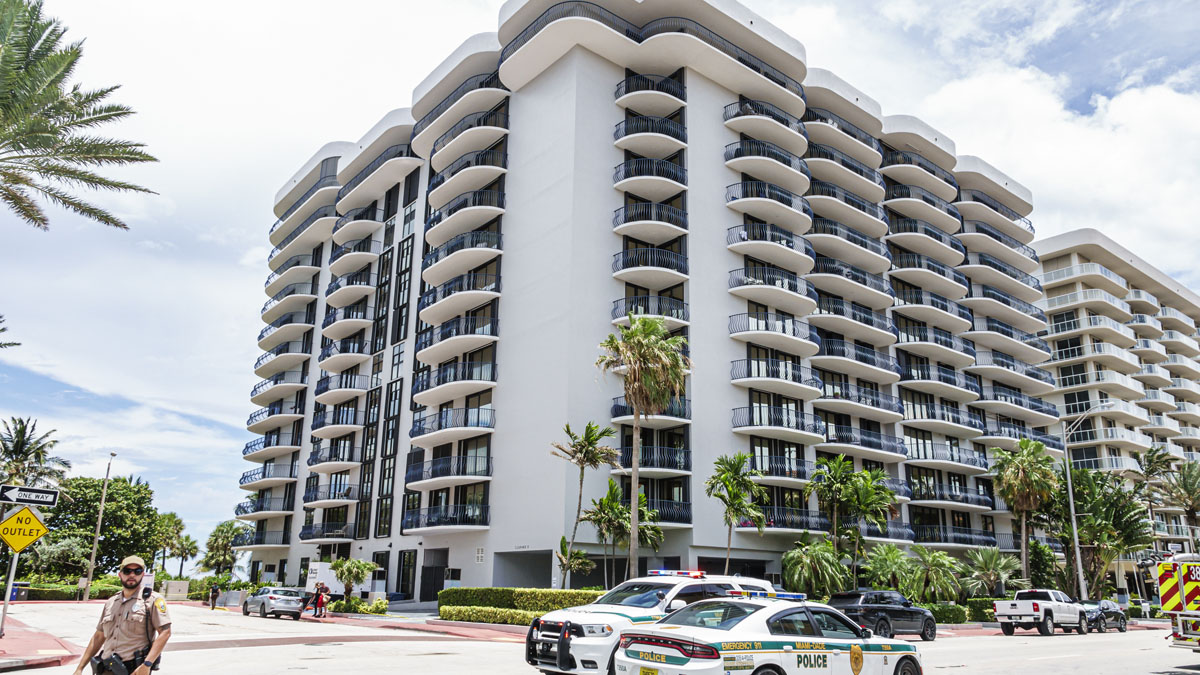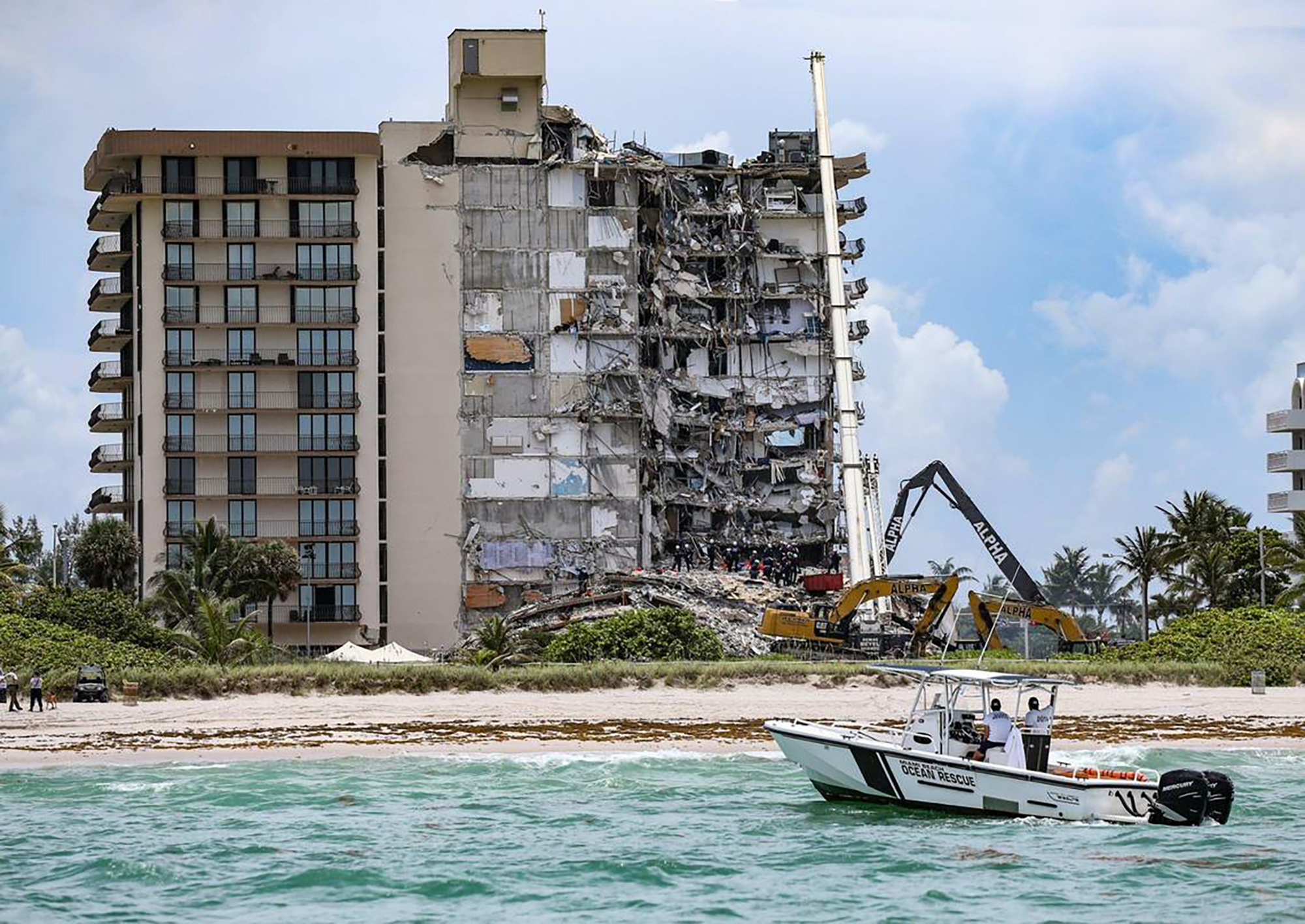After more than four years and nearly $40 million, the federal investigation into the disaster at Champlain Towers South in Surfside is homing on what has been the prime suspect as the initiation point of the collapse: a poorly constructed and reinforced section of the pool deck.
Engineers with the National Institute of Standards and Technology (NIST) also told advisory committee members they have found even earlier signs that the building in Surfside was failing months before the collapse that killed 98 people.
In retrospect, it seems, Champlain Towers South was trying to tell us something months before collapse: that it was in distress.
SURFSIDE CONDO COLLAPSE
For the first time, leaders of the probe showed photos of a sliding glass door that could have been one of those signs.
It broke twice, with one side “stuck in a nearly closed position and (could) not be used for approximately one month before the collapse of the building,” said Judith Mitrani-Reiser, the lead investigator.
The engineers stressed that a stuck sliding glass door does not mean your building is going to collapse.
But, in the case of Champlain Towers, it was not the only sign.
As previously reported, Meiser continued, “in early June 2021, just three weeks before the failure of Champlain Towers South, severe distress was noted in … a masonry planter wall and planter box supported on the pool deck.”
Last year, NBC6 Investigates spoke to an engineer who believes the pool deck collapsed around a column closest to that point — one of the weakest spots on the deck, the government-funded engineers have confirmed.
And there was more: a gate along the same line just a bit farther south became jammed and unusable as one side of it sank by as much as one inch one week before disaster struck.
The night before, an eyewitness described seeing a water leak that grew from a drip to a steady flow over the next few hours, the investigators reported.
Minutes before collapse, a section of wall on the south end of the property also failed.
In sum, Mitrani-Reiser said, “There were many events of distress occurring across the pool deck and the street level parking decks for days, weeks, a month and even years before the collapse of Champlain Towers South. These early signs of distress were all concentrated in the pool deck and street level parking deck area with much concentration near previously repaired cracks and along construction joints.”
That has led engineers searching for the initiating failure that led to collapse to now focus on the first suspect – a connection between the pool deck and one or more supporting columns – as the prime suspect.
The project’s associate lead investigator, Glenn Bell, repeated a previous finding that the pool deck was designed so badly, some areas had less than half of the strength required by the building code. That, combined with improper placement of steel bars (called reinforcement) within the concrete, made the deck even more vulnerable to failure, he said.
“Design understrength and misplaced slab reinforcement caused the bulk of the problems,” he said. “These two conditions existed from the time construction was completed 40 years before the partial collapse.”
“Combined with the evidence that Judy described of slab distress in the days, weeks and months before the failure indicate that it is more likely that the failure started in a pool deck slab-column connection than we considered in June,” Bell concluded.
When NIST makes its recommendations, perhaps sometime next summer, committee members suggested they include how to spot distress before it’s too late.
“The missed opportunities represented by some of these precursors,” Bell said, “it happens far too common, and I think a lot of it goes back to the need for education of people responsible for managing buildings and even those who may be more casual or lay observers.”
Mitrani-Reiser agreed but noted those warning signals are much clearer in hindsight.
“It’s easy for us here, after the collapse, to go back and look at all of this evidence and say, ‘Oh, there was this, and there was that’… But, you know, you see something, say something. Raise observations to your building manager.”
But, engineers said, there’s no need to panic thinking every crack in concrete is a sign of impending disaster.
As always in disasters like this, they say, there is more than just one cause.
The public may not see their detailed findings until next spring, approaching five years from the day Surfside and much of South Florida will never forget.

Want more insights? Join Working Title - our career elevating newsletter and get the future of work delivered weekly.

